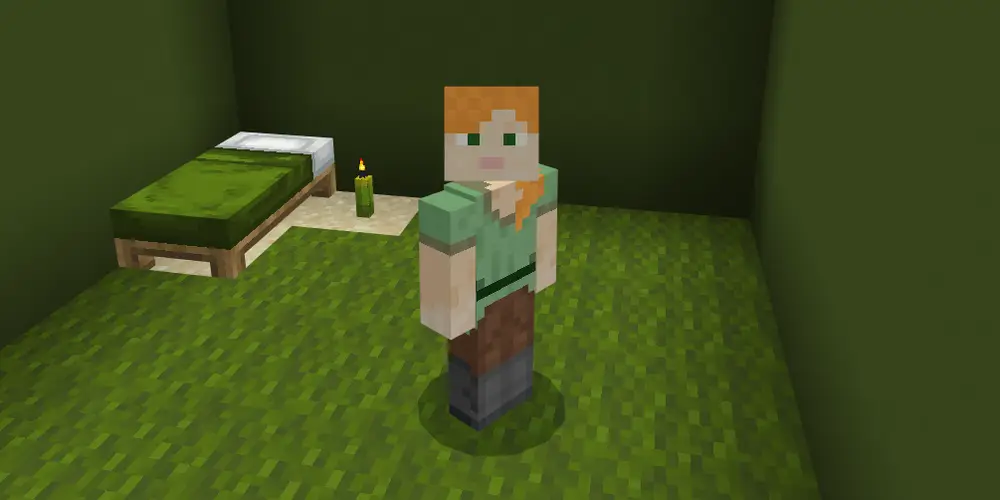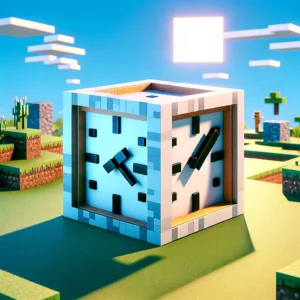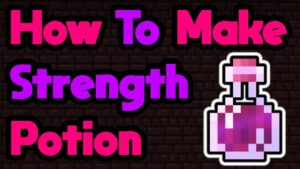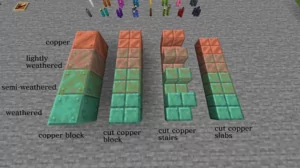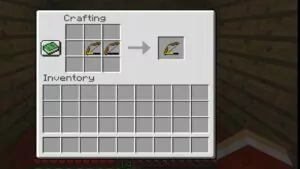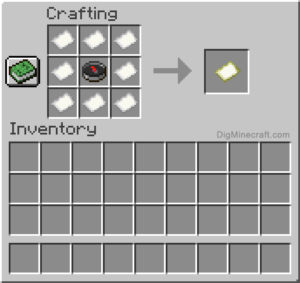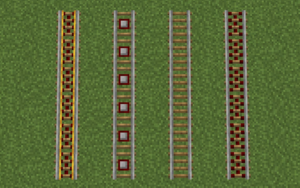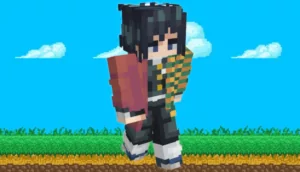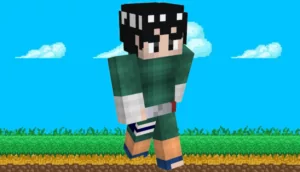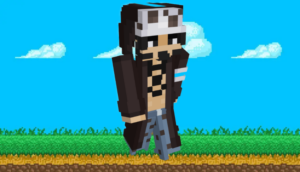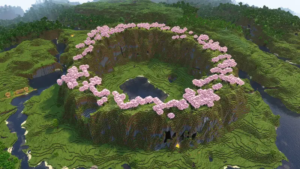Wondering how to produce green dye in Minecraft? While Minecraft may seem to have an abundance of green, there’s no harm in wanting more, right? Jokes aside, introducing shades of green or lime to your subterranean, Nether, or End constructions can add a vibrant touch. Plus, green elements can provide unique textures to your Minecraft abode’s exterior and even let you modify your pets’ collar hues. However, the process for crafting this dye deviates slightly from most other dyes.
Introduction to Minecraft Dyes
Minecraft, a sandbox game celebrated for its creative freedom and diverse crafting options, offers players a palette of vibrant dyes to satiate their artistic endeavors. Within this blocky universe, dyes aren’t just a means of expression; they’re tools that can elevate the aesthetics of your in-game projects, providing a dash of color to the often earth-toned default Minecraft world.
Sources of Green Dye in Minecraft
Green dye stands out uniquely in the spectrum of Minecraft colors, primarily because its raw materials differ from the direct plant-based sources of other dyes. The primary ingredient for crafting green dye is cactus, a desert plant. When smelted in a furnace, cactus yields this verdant shade, ready to be used in a variety of crafting recipes.
The deserts, with their vast stretches of sand, sporadic cacti, and relentless sun, are your go-to biomes for collecting this plant. Not only are cacti essential for green dye, but they also serve as a defense mechanism, dealing damage to any entities that come into contact.
Crafting Green Dye: Step-by-Step Guide
Crafting green dye in Minecraft is a relatively straightforward process that takes place predominantly at the furnace. To begin, you must first have a cactus in your possession, which is typically found in desert biomes. These towering green plants are unmistakable with their prickly appearance and are essential for the creation of green dye.
Once you’ve collected enough cacti, you’ll need to prepare a furnace. This stone-based utility is where the transformation from plant to dye occurs. To get started with the smelting process, place the cactus in the top slot of the furnace. Following that, you’ll need a source of fuel. Common choices include coal or wooden planks, but other combustible items can work as well. Insert your chosen fuel into the furnace’s bottom slot. As the furnace burns, the cactus is processed, converting it into the desired green dye. You’ll notice the flames working their magic, and before long, the furnace’s output slot will present you with freshly-made green dye. Retrieve it, and you’re ready to use this vibrant colorant in your various Minecraft crafting endeavors. It’s as simple as that: with just a furnace, some fuel, and a cactus, you can add a splash of green to your Minecraft world.
Alternative Methods to Obtain Green Dye
While smelting cactus is the most straightforward method to obtain green dye in Minecraft, players who wish to explore different avenues have options at their disposal. A somewhat indirect but intriguing method to craft a richer shade of green involves the crafting table. By delving into the world of color mixing, players can channel their inner artists and blend different dyes together.
Specifically, if one were to merge the deep hues of blue dye, which originates from the precious lapis lazuli, with the bright vibrancy of yellow dye, sourced either from radiant sunflowers or humble dandelions, they’d produce a delightful shade of green. This process not only offers a variant of green that differs from the cactus-derived dye but also introduces players to the vast possibilities of color combinations in the game. Such an approach ensures that players can achieve the exact shade of green they desire, tailor-made to fit their creative vision.
Using Green Dye: Application and Utility
The allure of green dye in Minecraft extends far beyond its vibrant hue; its versatility transforms mundane items into personalized masterpieces, breathing life into your creations. One of the first things many players discover is how wool, a basic block with myriad applications, takes on an entirely new character when dyed green. From constructing tents to crafting beds and carpets, green wool becomes an asset, especially when recreating forest-themed or nature-centric builds.
Terracotta, a more sophisticated building material, also serves as a canvas for green dye. When adorned with this shade, terracotta brings a rustic charm, often reminiscent of old moss-covered structures or relics, ideal for historical or aged builds. Glass, another recipient of the dye’s magic, metamorphoses into a tinted version, allowing architects to design stunning windows, skylights, or even underwater viewing chambers with a verdant touch. Beyond construction, adventurers and fighters can use green dye on their leather armor. This not only makes a style statement but also offers tactical advantages. For instance, in dense jungles or grasslands, green-tinted armor can act as camouflage, making players less noticeable to hostile mobs or even other players in PvP scenarios. In the vast, dynamic world of Minecraft, the applications of green dye are only limited by a player’s imagination.
Storing and Managing Your Dyes
In the sprawling world of Minecraft, dyes serve as essential tools for personalizing and coloring various in-game items. As your collection of dyes grows, the importance of systematic storage becomes evident. Proper organization ensures that your crafting process is smooth and free from frustrating searches. Given the vast range of hues available, it’s easy for players to amass a sizable collection. Therefore, setting aside dedicated storage units for these dyes can significantly enhance your gameplay experience.
Chests, the primary storage solution in Minecraft, can be designated specifically for dye storage. By allocating one or multiple chests solely for this purpose, you ensure a central location for all your colorants, facilitating quick access during impromptu or planned crafting sessions. For the more meticulous player, labeling these chests—either through signs or item frames—offers a visual guide, helping pinpoint the exact shade needed for a project. As players dive deeper into the world of dye production and usage, there might also be merit in creating an entire storage room dedicated to dyes. This room, designed with functionality in mind, can house chests, crafting tables, and even smelting equipment, serving as a one-stop hub for all dye-related endeavors. Organizing by color gradient or frequency of use can further streamline the crafting process, ensuring that the right shade is always at your fingertips.
Combining Green Dye with Other Colors
Minecraft’s dye system offers a world of color customization, a realm where the vibrant green dye shines with its potential to meld and transform when paired with other shades. Green dye, standing distinct in its verdant brilliance, can be expertly mixed with other dyes to create a plethora of new shades and nuances. By understanding the base colors and their interactions, players can delve into the art of dye combination, achieving specific tints and tones for their creations.
One notable example of the transformative power of green dye is when it’s combined with the purity of white dye. This fusion results in lime dye, a brighter and zestier variant of green that’s perfect for projects needing a touch of vivaciousness. The shade captures the freshness of spring leaves, and its application can breathe life into otherwise dull builds, be it in the form of lime-colored banners or vivid wool blocks.
However, the journey of color exploration doesn’t stop at lime. The broader spectrum of dyes in Minecraft allows for countless combinations, each bearing its unique shade. By methodically experimenting with green dye’s interactions, players can discover and craft a range of greens, from deep forest shades to soft pastel hues. This flexibility not only enriches the visual palette available to players but also deepens their engagement with the game’s crafting mechanics, encouraging continuous exploration and creativity.
Tips and Tricks for Efficient Dye Production
Efficient dye production in Minecraft can significantly amplify a player’s ability to decorate and personalize their in-game world. To truly maximize the production of green dye, an automatic cactus farm becomes an invaluable asset. By employing some rudimentary redstone mechanics, players can design systems that not only continuously harvest cacti but also automatically smelt them, ensuring a consistent and hands-free generation of green dye. This method optimizes the player’s time, allowing them to focus on other in-game pursuits while their dye reserves steadily grow.
But, as with many aspects of Minecraft, there’s always room for nuance and optimization. The location of the cactus farm matters. Placing it in desert biomes can accelerate the growth rate of cacti. Moreover, integrating hopper and chest systems can store the produced dye, ensuring none goes to waste. When the smelting process is streamlined using efficient fuel sources like bamboo or blaze rods, the conversion from cactus to dye becomes even more effective, further expediting the production rate.
Beyond the technicalities of farm setups, there’s the broader Minecraft economy to consider. Players should remain vigilant for wandering traders. These nomadic merchants occasionally traverse the landscapes with unique trades, some of which might offer a boost to a player’s dye collection or even provide alternative avenues to secure green dye or its components. Engaging with these traders can sometimes result in unexpected windfalls, rounding out a player’s strategy for efficient dye accumulation.
Conclusion: The Versatility of Green Dye
In Minecraft, green dye is more than just a colorant; it’s a testament to the game’s ability to infuse life and vibrancy into virtual blocks. Whether you’re crafting banners, designing stained-glass windows, or just adorning your sheep in splendid shades, green dye is an indispensable asset in your Minecraft toolkit. As with every aspect of this sandbox game, it encourages creativity, experimentation, and above all, fun.
